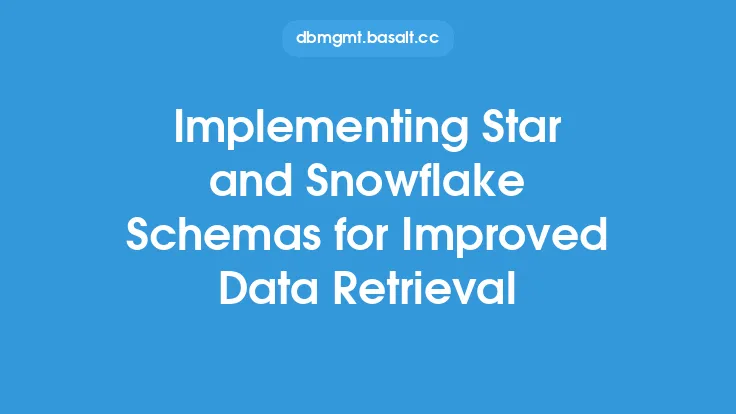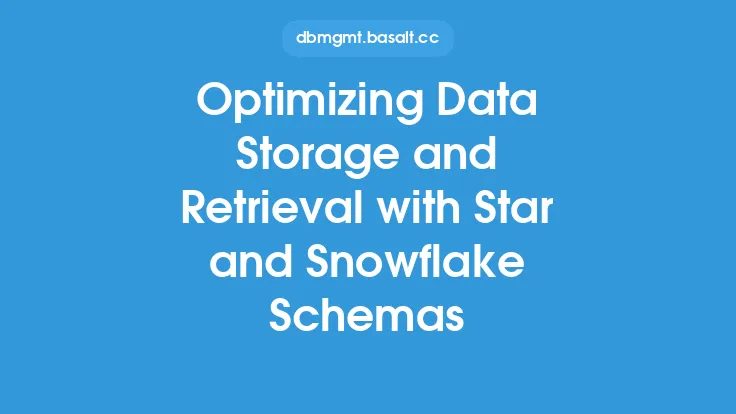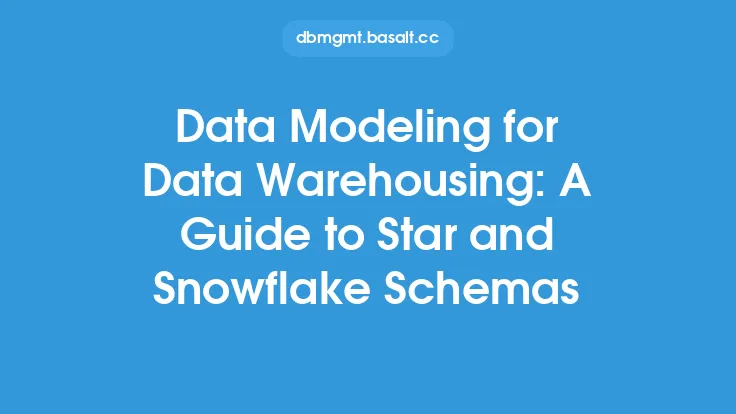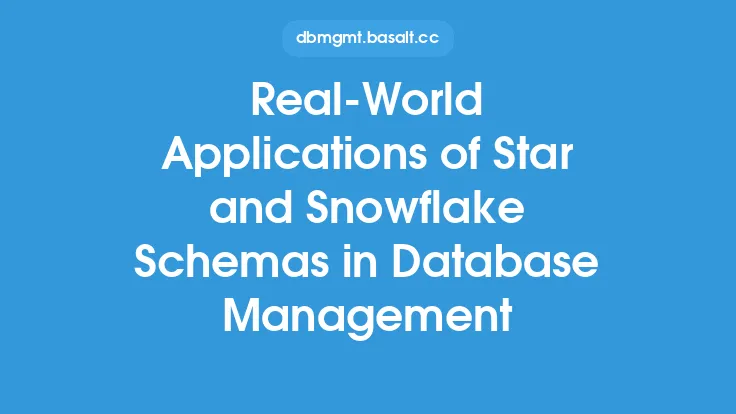Data denormalization is a crucial aspect of database design, particularly in data warehousing and business intelligence applications. It involves organizing data in a way that reduces the number of joins required to retrieve data, thereby improving query performance. Two popular schema designs used in data denormalization are star and snowflake schemas. These schemas are designed to optimize data retrieval and provide fast query performance, making them essential components of data warehousing and business intelligence systems.
Introduction to Star Schemas
A star schema is a database schema design that consists of a central fact table surrounded by dimension tables. The fact table contains measurable data, such as sales or website traffic, while the dimension tables contain descriptive data, such as date, time, or geographic location. The dimension tables are connected to the fact table through foreign keys, creating a star-like structure. Star schemas are ideal for data warehousing and business intelligence applications because they provide fast query performance and simplify data analysis. The fact table in a star schema typically contains a large number of rows, while the dimension tables contain a smaller number of rows.
Introduction to Snowflake Schemas
A snowflake schema is an extension of the star schema design. It involves further normalizing the dimension tables in a star schema, creating a more complex structure that resembles a snowflake. In a snowflake schema, each dimension table is connected to multiple related tables, creating a hierarchical structure. Snowflake schemas are useful when there are multiple levels of granularity in the data, such as in a sales database where data is stored at the regional, national, and international levels. Snowflake schemas provide more detailed data analysis capabilities than star schemas but can be more complex to design and maintain.
Key Components of Star and Snowflake Schemas
Both star and snowflake schemas consist of two main components: fact tables and dimension tables. Fact tables contain measurable data, while dimension tables contain descriptive data. The fact table in a star schema is typically denormalized, containing a large number of rows, while the dimension tables are normalized, containing a smaller number of rows. In a snowflake schema, the dimension tables are further normalized, creating a more complex structure. The key components of star and snowflake schemas include:
- Fact tables: contain measurable data, such as sales or website traffic
- Dimension tables: contain descriptive data, such as date, time, or geographic location
- Foreign keys: connect dimension tables to the fact table in a star schema, and connect related tables in a snowflake schema
Benefits of Star and Snowflake Schemas
Star and snowflake schemas provide several benefits, including:
- Improved query performance: by reducing the number of joins required to retrieve data
- Simplified data analysis: by providing a clear and consistent structure for data
- Increased data granularity: by allowing for more detailed data analysis
- Better data management: by providing a scalable and maintainable structure for large datasets
Design Considerations for Star and Snowflake Schemas
When designing star and snowflake schemas, several factors must be considered, including:
- Data granularity: the level of detail required in the data
- Data volume: the amount of data to be stored
- Query patterns: the types of queries that will be run against the data
- Data complexity: the complexity of the data structure
- Scalability: the ability of the schema to handle increasing amounts of data
- Maintainability: the ease of maintaining and updating the schema
Best Practices for Implementing Star and Snowflake Schemas
To ensure successful implementation of star and snowflake schemas, several best practices should be followed, including:
- Define clear business requirements: to ensure the schema meets the needs of the business
- Use a consistent naming convention: to simplify data analysis and maintenance
- Optimize data storage: to minimize storage requirements and improve query performance
- Use indexing and partitioning: to improve query performance and reduce storage requirements
- Monitor and maintain the schema: to ensure it remains scalable and maintainable over time
Common Challenges and Limitations
While star and snowflake schemas provide several benefits, they also present some challenges and limitations, including:
- Complexity: snowflake schemas can be complex to design and maintain
- Data redundancy: denormalized data can lead to data redundancy and inconsistencies
- Scalability: large datasets can be challenging to manage and maintain
- Query optimization: optimizing queries for star and snowflake schemas can be complex
Conclusion
Star and snowflake schemas are essential components of data warehousing and business intelligence systems. They provide fast query performance, simplified data analysis, and increased data granularity. By understanding the key components, benefits, and design considerations of star and snowflake schemas, organizations can create scalable and maintainable databases that meet their business needs. While there are challenges and limitations to using star and snowflake schemas, following best practices and using the right tools and techniques can help overcome these challenges and ensure successful implementation.





